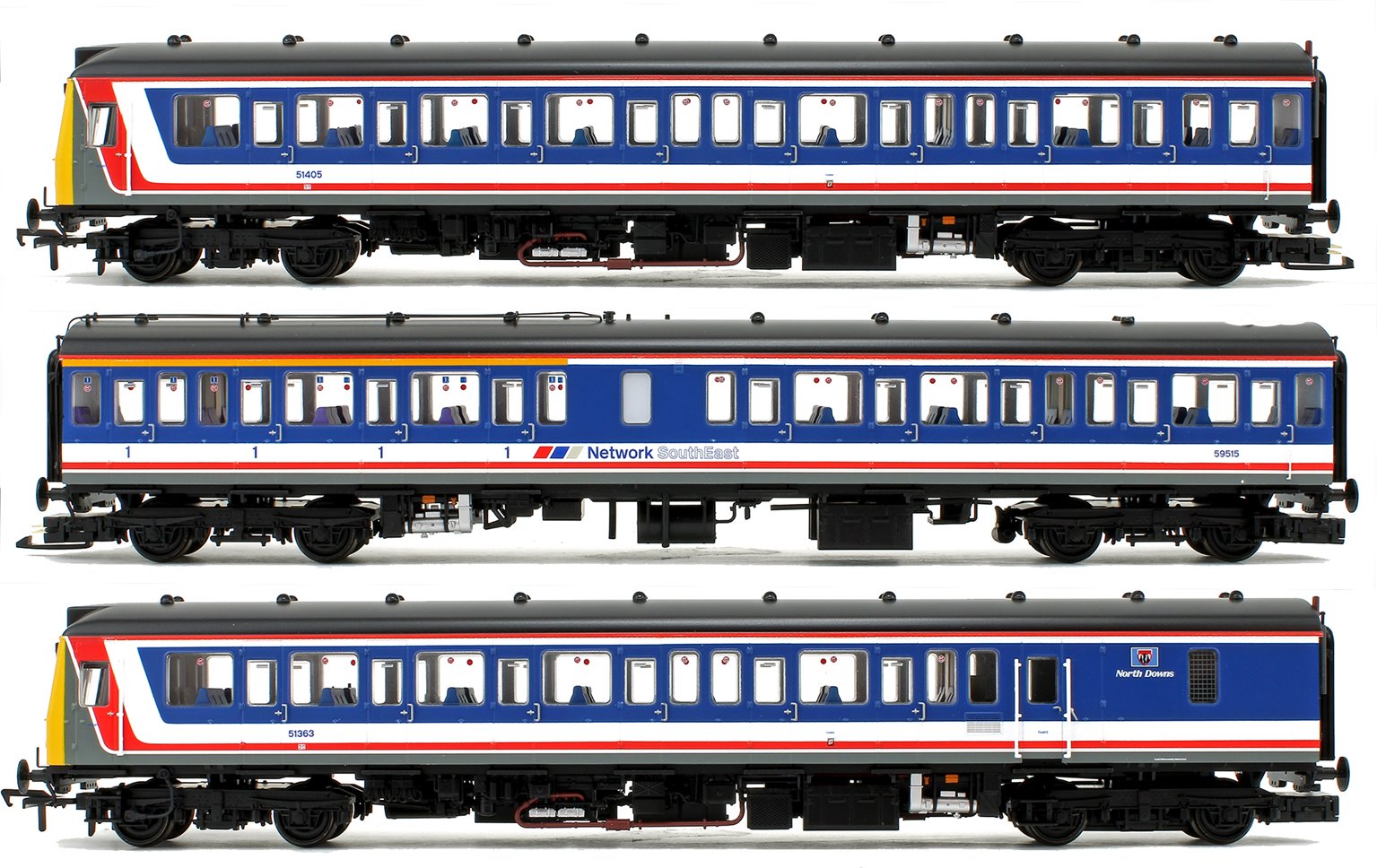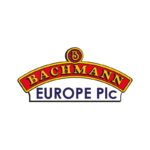You are here:
Bachmann 35-502SF Class-117 3-Car-DMU BR-Network-SouthEast (Revised)
Bachmann 35-502SF Class-117 3-Car-DMU BR-Network-SouthEast (Revised) Digital-Sound-Fitted
Out of stock
Description
Bachmann 35-502SF Class-117 3-Car-DMU BR-Network-SouthEast (Revised) Digital Sound Fitted
Description
Highlights:
- Bachmann Branchline OO Scale
- Era 8
- Pristine BR Network SouthEast (Revised) Livery
- 3-Car Unit No. L425, comprising DMS No. 51405, TCL No. 59515 and DMBS No. 51363
- Destination Blinds for Gatwick Airport and Reading
- Accessory Pack
- NEM Coupling Pockets
- Close Coupling Mechanism
- Interior Cab Lighting
- Directional Lighting
- Illuminated Destination Blinds
- Lighting can be controlled by chassis-mounted switches or via DCC
- SOUND FITTED – See below for function list
- Length 850mm (over couplings)
SOUNDS
F0 – Directional Lights – On/Off
F1 – Warm Engine Start-up / Shut-down (with F5 On – Cold Engine Start-up)
F2 – Brake
F3 – Single Horn (Speed & Direction Dependent)
F4 – Two-Tone Horn (Speed & Direction Dependent)
F5 – Cold Start (engage F5 before F1) / Light Load
F6 – Engine Cruise / Compressor Speed-up
F7 – Flange Squeal (at Speed Steps 1-39 of 127)
F8 – Detonators (Speed Variable)
F9 – Saloon Lighting – On/Off
F10 – Guard’s Whistle
F11 – Crawler Mode (Low speed & sounds only)
F12 – On – Guard’s Single Buzzer / Off – Driver’s Single Buzzer Response
F13 – On – Guard’s Double Buzzer / Off – Driver’s Double Buzzer Response
F14 – On – Driver’s Door Open / Off – Driver’s Door Closed
F15 – Passenger Door Slam (Before moving)
F16 – DMS Destination Blind Light – On/Off
F17 – DMBS Destination Blind Light – On/Off
F18 – Fade All Sounds
F19 – Windscreen Wipers
F20 – DMS Directional Lights – Off/On
F21 – DMBS Directional Lights – Off/On
F22 – Rail Join Clatter – Off/On (Speed Variable)
F23 – On – Passenger Door Open / Off – Passenger Door Closed
F24 – Cab Lights – On/Off
F25 – Handbrake
F26 – Air Tank Drain Down
F27 – Volume Down
F28 – Volume Up
Analogue Users: Please note that normal load running sounds and any other automatic or randomised sounds will also operate when this model is used on analogue control (DC) straight from the box!
History
The British Rail Class 117 diesel multiple units (DMUs) were built by Pressed Steel from 1959 to 1961. When first introduced, these three-car units were all based with the similar Class 121 single carriage (railcar) units on British Railways Western Region for suburban work out of London Paddington. The units were largely based at Reading and Southall depots. The units remained here for many years working these services.
Withdrawal of other DMUs facilitated moves for some units from the Western Region to Birmingham and Scotland, prior to the delivery of new units to replace them. They were given refurbishments. The first shake up in ownership occurred in the late 1980s, when the Scottish, Welsh, Cornish and Birmingham based units were transferred to Provincial Services, later Regional Railways, in the sectorisation of British Rail, while the Southall-based units transferred to Network SouthEast. They were replaced on the lines out of Paddington when the Class 165/1 ‘Network Turbo’ units came into service by 28 November 1992.
They remained in service on the former Western Region until replaced by Class 150 and Class 153 DMUs by 21 May 1993. An attempt was made to remove them from Cornish work using Class 142 “Skipper/Pacer” units, but these non bogie units proved to be a liability on the tight Cornish branchline curves, increasing rail and wheel wear, moving to the North of England instead. They were finally replaced with the advent of more Class 150s and Class 153s freed up from other areas. They continued to work in Scotland until 12 January 1998, where they were replaced with Class 156s.
For many years, passenger services on the Birmingham Cross-City Line were worked by elderly Class 117, along with Class 115, 116, 118 and 121 diesel multiple units, but all were withdrawn from service by 1995. In 2000, Class 150 Sprinter units replaced the Class 117 units on Silverlink, finally bringing to an end decades of service on Britain’s rail network in front line service.
Additional information
| Weight | 1799 g |
|---|---|
| Brand | Bachmann |
| Condition | New |
| Scale | OO/HO Gauge |
| Format | Diesel/Electric |
| Status | DCC Sound Fitted |




